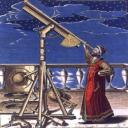Yahoo Answers is shutting down on May 4th, 2021 (Eastern Time) and beginning April 20th, 2021 (Eastern Time) the Yahoo Answers website will be in read-only mode. There will be no changes to other Yahoo properties or services, or your Yahoo account. You can find more information about the Yahoo Answers shutdown and how to download your data on this help page.
Trending News
If a 10km asteroid heads for Earth, could a 500 Megaton nuke destroy it?
This is purely theoretical, but I saw the footage of the Tsar Bomba and also the Castle Bravo detonation, the two biggest nuclear explosions ever done. To my knowledge there is no real limit in how powerful you can make a nuclear warhead, but the larger the yield the bigger it will be. So, first of all, what would be the largest nuclear warhead we could deliver into space? Is a 500 Megaton warhead possible? If so, when placed on the surface of a 10km wide asteroid, would such a detonation not completely vaporize the asteroid? Just based on the destruction seen by the Tsar Bomba (50 Megaton)?
I read a lot of reaction that a shattered asteroid with roughly the same mass (surely a 500 megaton warhead would vaporize a lot of the material in a 10km asteroid. Lets also not forget what kind of power such a warhead would have. 10 times more than the Tsar Bomba. So, if the asteroid changes from one solid object of 10km into millions of smaller fragments, then yes, it causes huge damage, but Earth can then catch them better and spread the impact energy, not making it an ELE.
11 Answers
- 3 months ago
There is no such thing as a 500MT nuke. The largest ever constructed was the Tsar Bomba, built by Russia, and capable of delivering a yield of 100Mt. It was damped for the test detonation to 50Mt out of concern for the crew of the plane that dropped it.
If you look up the publicly available literature you will find that theoretically a nuke can be "staged" to increase the yield by a factor of about five per stage. Therefore in principle it would be possible to stage the Tsar Bomba design to arrive at a device yielding about 500Mt.
In practice, the device would weigh about 120 tons. This is totally impractical to launch on anything currently in production or ever built in the past. Even the Saturn V could only launch about 35 tons into deep space, although it could launch about 100 tons into a near lunar location if necessary.
A 5km asteroid would be a challenge of unprecedented proportions to deal with. Make no mistake: when push came to shove, nukes would be the only option. My guess is that several smaller nukes would be shot at the asteroid and would burst at the surface in the hope of nudging the asteroid onto a trajectory to miss Earth. If it was too late for that, the thing would be blown to bits if possible (many asteroids are "rubble piles" and may break up if hit). Being blown into smaller pieces means that each piece would present a larger surface area to the atmosphere and so would ablate more before hitting the ground, therefore resulting in a less catastrophic outcome.
- Anonymous3 months ago
It would depends on the nukes size and precision zxjqkbcd
. . . . . . . . . .
🔳🔳🔳🔳🔳🔳🔳🔳🔳🔳
- Anonymous3 months ago
No, a 500 Megaton blast is not enough to unbind the gravitational potential energy of a 10km asteroid.
But if there's an asteroid headed your way, it's not a good idea to blow it up. Blowing it up does not change the energy of impact of whatever pieces have broken up. What you want to do is install a small ion rocket pushing it sideways for as long as it takes to divert its trajectory from collision with the Earth.
- thomas fLv 73 months ago
Which is worse? A musket ball or a shotgun blast? That is what you are asking.
- How do you think about the answers? You can sign in to vote the answer.
- 3 months ago
>>If a 10km asteroid heads for Earth, could a
>>500 Megaton nuke destroy it?
A couple of things... first, we'd need to know what *kind* of rock it is... is it solid iron? Is it rock? Is it rock and ice? Is it solid, or simply a collection of rocks held by it's own loose gravity?
Next, how far out is it? Is it due to hit next week? Next year? Or next century?
Sending a nuke up to collide with such a beast (this is about the size of the one that wiped out the dinosaurs) would have very little effect on a dense asteroid, like solid iron, or even just solid rock... you may melt some of it, and you may blast a few pieces off, but by and large - it's going to keep coming, pretty much intact. A rock pile may be jarred loose, especially if the warhead was able to penetrate the collection to some depth. But - given enough time, the gravitational pull of those rocks may pull themselves back together, and the threat remains.
Another thought is, the further out the impact is predicted to be, the more effect a nuke may have. Knock it's course by a 1/4 of a degree, and - over a century - that course may have it *missing* the Earth. The further out the rock is, the more chance there is of that occurring.
>>This is purely theoretical, but I saw the footage of the
>>Tsar Bomba and also the Castle Bravo detonation,
>>the two biggest nuclear explosions ever done.
Impressive devices... too bad we ever discovered how to make them... I hope someday we send every single one into the Sun.
>>To my knowledge there is no real limit in how powerful you can
>>make a nuclear warhead, but the larger the yield the bigger it
>>will be.
Uh... that's debatable. If you're going to use it to protect Earth, then you'd likely need to build the huge mega-tsar-bomba on the moon, where you could actually lift it with a rocket... And, that would be safer too - in case the rocket were to fail, I'd rather have it fall onto the lunar surface than creating the largest dirty-bomb ever on Earth... (even hydrogen bombs have fissionable first stages.)
>>So, first of all, what would be the largest nuclear warhead
>>we could deliver into space? Is a 500 Megaton warhead possible?
500 megatons is an *awful* lot... You still need a trigger with fissionable material, and you'd need to contain the tritium for a much longer period of time, which means a thicker casing, which means more mass. I'm not sure you could *build* a dependable, stable 500 mt bomb, and I have to doubt you could actually launch it.
>>If so, when placed on the surface of a 10km wide asteroid, would
>>such a detonation not completely vaporize the asteroid?
No... even if the asteroid was a comet - a majority of water ice - you'd break some off, but you haven't *destroyed* it's matter - it's still there. And, that matter is still on the course (or close to it) for Earth. And, here's another point... a big rock heading toward Earth might be even *more* dangerous if you break it up. Instead of one big hole in the Earth, now you have millions of impacts; you've changed a single projectile into a shotgun blast, which could be more devastating than allowing the rock to hit Earth by itself.
No matter how big the explosion is - that *mass* is still going to continue on it's course.
>>Just based on the destruction seen by the Tsar Bomba (50 Megaton)?
It's also important to know that the blast that destroys the landscape by such a bomb is carried by Earth's atmosphere... In the vacuum of space, there's actually very little shock wave energy transmitted - because there's no medium to carry it. You get a big flash, and that's about it. In the movie "Armageddon", they were drilling to blast it from inside - which *might* break it apart, but... it's still coming.
- JohnLv 63 months ago
A thermonuke can be scaled up to any size. Castle Bravo was designed as 5 megatons but exploded at 15 megatons. Teller scratched his head and found the extra 10 megatons (TNT equivalent). The case of Castle Bravo was U238 (non-fissile) and somehow non-fissile material gave a 10 megaton kick. 1952 nuclear weapons technology. Before 1952 Oppenheimer had gotten kicked out (lost his security clearance) of our nuclear program. Teller didn't like Oppenheimer. Tsar Bomba, Sakharov. Called a pancake design that can't be scaled up to any size thus not a true thermonuke. Blow that asteroid to kingdom come.
- daniel gLv 73 months ago
All the nukes on earth wouldn't phase it.
Consider, Tsar Bomba and Castle Bravo were deep underground.
Yea, drill a deep hole in your asteroid a 50 megaton bomb like mentioned, would shatter it to pieces.
Now we have a load of smaller meteorites to deal with.
Watch the movie 'Armageddon',,you get the idea.
- jeffdanielkLv 43 months ago
We would not want to blue up an asteroid with a bomb. It would shatter into many pieces, and they would all hit earth. There would be a thousand impacts instead of one. The total mass would be the same.
- NyxLv 73 months ago
One of the last things you want to do is nuke an asteroid.
You turn a bullet into shotgun pellets with the same mass but now spread out over an even larger area. This would do nearly the same amount of damage if it were left whole.
With something that huge, it would be easily detected decades before impact. so what to do instead?
Deflect it by slowing it down or speeding up the asteroid's orbit by just an hour or so.
Then the thing slips by and misses everything.
- Old Man DirtLv 73 months ago
Some times a bigger bomb is not the solution or best solution.
To just detonate on bomb might still leave enough material on track to strike the earth with sufficient mass to still cause damage. Even if it burns up in the atmosphere it would still have an impact on the atmosphere.
Also just where it is detonated comes into play. The destructive power of a nuclear bomb is also a function of the expansion of air due to a sudden rise in temperature. So the bomb would need to penetrate the asteroid to be affective. A series of surface explosions might be the alternative depending on material density of the asteroid.
The Tsar Bomb had a 18700 lbs. warhead. The Space shuttle weighed about 165,000 lbs.. Maybe larger things have been launched and placed in orbit. But I would suggest that a bomb ten times as big as the Tsar Bomb could be launched into space in the attempt or better yet ten separate bombs.
Just how long it would take to assemble the thing to launch would be difficult to say.








